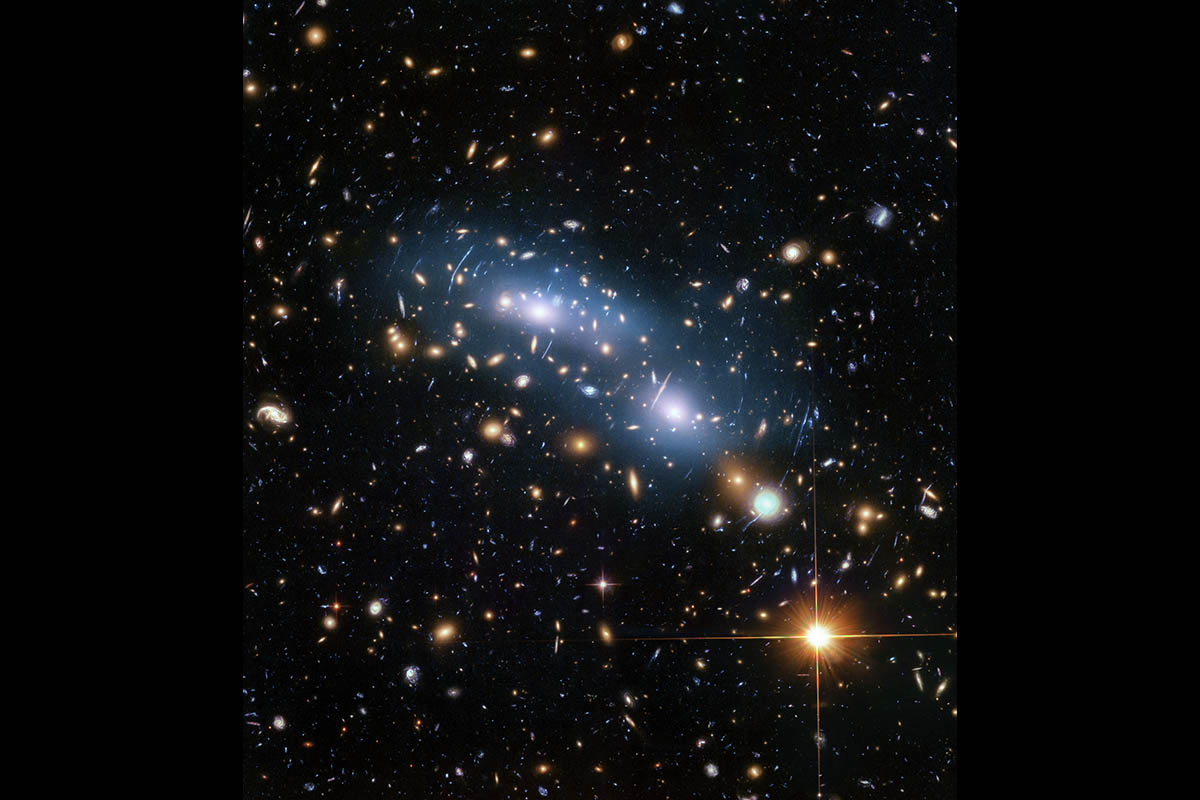This image from the NASA/ESA Hubble Space Telescope shows the galaxy cluster MACS J0416. This is one of six galaxy clusters being studied by the Hubble Frontier Fields program, which produced the deepest images of gravitational lensing ever made. Scientists used intracluster light (visible in blue) to study the distribution of dark matter within the cluster. (NASA, ESA and M. Montes (University of New South Wales))
Home This image from the NASA/ESA Hubble Space Telescope shows the galaxy cluster MACS J0416. This is one of six galaxy clusters being studied by the Hubble Frontier Fields program, which produced the deepest images of gravitational lensing ever made. Scientists used intracluster light (visible in blue) to study the distribution of dark matter within the cluster. (NASA, ESA and M. Montes (University of New South Wales)) This image from the NASA/ESA Hubble Space Telescope shows the galaxy cluster MACS J0416. This is one of six galaxy clusters being studied by the Hubble Frontier Fields program, which produced the deepest images of gravitational lensing ever made. Scientists used intracluster light (visible in blue) to study the distribution of dark matter within the cluster. (NASA, ESA and M. Montes (University of New South Wales))
This image from the NASA/ESA Hubble Space Telescope shows the galaxy cluster MACS J0416. This is one of six galaxy clusters being studied by the Hubble Frontier Fields program, which produced the deepest images of gravitational lensing ever made. Scientists used intracluster light (visible in blue) to study the distribution of dark matter within the cluster. (NASA, ESA and M. Montes (University of New South Wales))



